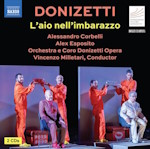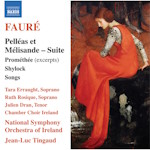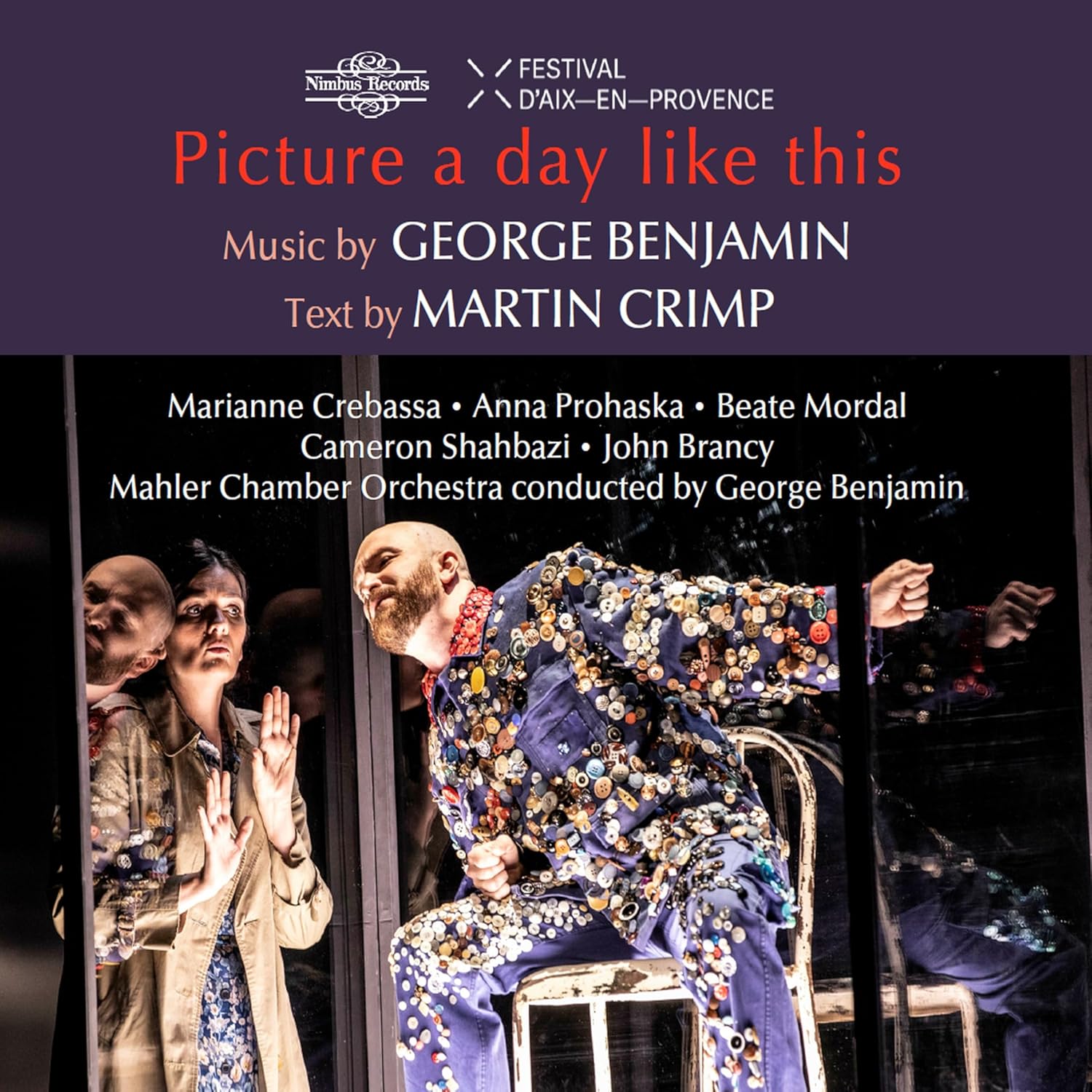
Serge Prokofiev (1891-1953)
Symphony No. 6 in E flat minor, Op. 111 (1945-47)
London Symphony Orchestra/Gianandrea Noseda
rec. 2023, Barbican Hall, London
Reviewed as a download
LSO Live LSO0390 [41]
This version of Prokofiev’s Symphony No. 6 is a digital-only product. It follows previous releases of symphonies 1, 3 and 5 from the partnership of Noseda and the LSO. Their ongoing Shostakovich cycle has attracted some great notices, instalments of which have been available both in download format and as SACDs. I first encountered Gianandrea Noseda when he bounded out of the green room at the BBC’s Studio 7 on Oxford Road, Manchester. Full of energy and positivity, he was a breath of fresh air in the city and soon showed what acumen he could bring to Russian music. He gave plenty of Tchaikovsky, Rachmaninov, Shostakovich and Prokofiev in Manchester and recorded the latter composer a good deal, too. I particularly remember his record with the BBC Philharmonic of The Stone Flower (review). In preparing this review, I found that I had taped an account he gave of Prokofiev’s sixth symphony at the Bridgewater Hall in November 2011. It is a fine performance actually (13:43/14:32/11:22) but not as polished as this newer rendition.
Written between the end of 1945 and 1947, Prokofiev’s Sixth Symphony is the darker brother of the more popular Fifth. In 1946 when he was writing it, Prokofiev was feted in the Soviet Union. In April there was a big fuss over his 55th birthday: stagings of Betrothal in a Monastery and an abridged version of War and Peace. Stalin prizes were lavished on him, whilst Cinderella and revivals of Romeo and Juliet were danced at both the Kirov and the Bolshoi. It was all to change, though; after the premiere late in 1947, the state clamped down on artistic freedoms with the Zhdanov decrees of 1948 and Prokofiev’s Sixth Symphony was effectively banned.
The symphony is widely held to be his best. It may well be true, although I personally enjoy listening to its neighbouring works more. The mood of the work is dark and Prokofiev probes deeply. It is a massively scored work and is set in a very unusual key. For many years, Neeme Järvi’s Chandos version was sui generis, but since 2000 there have been many newcomers and I have chosen four excellent versions to listen to alongside the LSO performance. The work is in three movements and the table below allows us to see how timings compare.
| I | II | III | overall | |
| LSO Noseda | 14:31 | 15:03 | 11:53 | 41:27 |
| Cleveland Welser-Möst | 14:00 | 16:06 | 11:45 | 41:51 |
| Oslo Petrenko | 14:27 | 15:00 | 11:17 | 40:43 |
| São Paolo Alsop | 13:23 | 14:14 | 11:20 | 38:57 |
| Bournemouth Karabits | 13:50 | 13:05 | 11:03 | 37:58 |
The first movement is the longest sonata form structure Prokofiev ever wrote. There are three themes. The first is a spooky, soaring melody on muted violins and violas (0:20), the second a religious-sounding chant on oboes (3:20) and finally a cor anglais theme above a marching rhythm (the march starts at 06:09, the cor anglais arriving at 06:54). All these motifs are developed from their initial presentation and in a conventional development section which begins with a quickening of pace and ostinato. The climax is tremendous and is followed by a recapitulation beginning with that second plaintive theme. Throbbing brass is a feature of the return of the third theme. The first theme comes back only really as part of the coda to the movement.
I was very impressed with the sound captured by the technical team in the Barbican. It is very clear and compares favourably with all the contenders above. Noseda is slower in this first movement than his peers but his tempi are similar to Neeme Järvi in that classic record with the Scottish National. Previn in LA is slower and Gergiev in the Mariinsky ponderous in the extreme. For Naxos in 2015, Marin Alsop recorded a version that is well worth hearing (review). The São Paolo SO are excellent in all sections and the sound is good. Alsop sees the big vision of the movement really well and everything is proportioned naturally. A wide stereo separation and excellent sonics make Karabits’ version (review) very appealing to me, too. This record was also made in 2015 for the Onyx label.
Turning back to the LSO and Noseda, I think the performance really comes alive once we hit the development section (7:47). The moderate pace allows the layers to be placed one on top of the other organically. The build-up is managed well and tension screwed in with each phrase as we approach the climax. There is some fine solo work from the LSO principals in the recap and a very nicely done coda.
Fine as this account of the first movement is, it is surpassed by an absolutely, magnificent reading of the Largo. This may be the best played version of this stunningly beautiful music it has ever received on record. The strings are incandescent in their passion and ardour. Noseda adopts a tempo that has momentum whilst allowing his players space to resonate and glow. He shapes the arch of the piece masterfully too. The sound is a marvel. The music reminds me very much of his writing in Romeo and Juliet, yet there are obvious hints too of Wagner and even Weill in places (14:23).
A preparatory descending theme on high woodwind is answered by resonant strings before trumpet and accompanied brass sing out the principal theme (1:03). James Fountain is the trumpet hero. The Amfortas-like chord should you want to identify it occurs around 1:37. Prokofiev embellishes in proper Wagnerian fashion whilst remaining totally original and true to himself. There is a transition passage to a second theme, heard at 3:36. The strings bring back the principal at 5:21. It is achingly beautiful. The cello line is genius and played in heavenly fashion by the LSO. A ticking rhythm starts with lively timpani (Nigel Thomas) but dies away, giving way to a magical section for four horns that could have been lifted from Hänsel und Gretel. There is even more fantasy to come in a lovely little music-box section for harp and celesta (10:00). As you can tell, I am smitten with this music and urge you to get to know it. Prokofiev wrote nothing finer.
Franz Welser-Möst will, in a year, overtake George Szell as the Cleveland Orchestra’s longest serving Music Director. His recent version, recorded like Noseda’s in 2023 was reviewed well. The partnership he has built with that orchestra is legendary and his Prokofiev is superb. He relishes this movement in the record, stretching it out a little indulgently past the 16-minute mark (in fairness, Ormandy in his premier recording first issued on five American Columbia 78s also did this). The playing is faultless but the LSO’s soundscape edge it for me. Five years earlier, Vasily Petrenko recorded it with the Oslo PO for Lawo (review). The sound in their home concert hall is warm and natural and the orchestra phrase sensitively. Lawo’s sonics are great too. Petrenko’s Sixth is truly a real gem. In Bournemouth, Karabits turns in a sprightly middle movement. The trumpet theme moves with more agility. In the passages after the posing of the second theme, however, there is scant space between the phrases as winds and strings call to each other. This is a shame, as a little more air and a fraction more space could have made this good performance a great one. No, the Noseda version takes the palms in the largo. Now, onwards to the finale.
The breezy final movement of the symphony begins immediately with a bouncing theme with a subsidiary rhythmic section. A bassoon melody then leads us to the second theme with is first intoned by flute, oboe and clarinet with a brilliant tuba accompaniment (1:40). Prokofiev takes bits of the themes he has presented and takes them through different modes and keys, fugal writing, all manner of light and shade. It is very impressive, a technical masterclass in orchestration, harmony and counterpoint that can also be heard as slapstick! True genius. The return of the O Emmanuel-like chant from the first movement is unexpected and poignant. The mood becomes ominous and rises to a cry from the soul. The rhythmic pounding from the first theme of the finale comes back at the end and ushers in a swift coda ending the piece. I always feel the ending is a little rushed and wonder whether he could have made more of it.
Timings of all recordings of the finale are fairly consistent. The four recordings I picked for comparison are all very fine, which is why I selected them. Alsop in Brazil draws virtuosic playing from her players and is served well by the Naxos engineers. She gets many a sharp pointed accent from her strings in the development which I like and her horn section can really bray. After this, turning to Welser-Möst in Cleveland seems like rather an anti-climax. This crack unit from Ohio can really play, as we all know, but the movement drags its feet under a tepid tempo. Karabits’ overall pace is livelier and things are brighter but dynamically some passages are slightly misjudged and there is a slight homogeny in decibel level which bothers me somewhat.
Noseda and the LSO are a little slow for me. The shaping of the singing lines is wonderful though (try 2:16) and the wide, airy, aural experience we are treated to, allows us to really feel the attack of the ensemble when it comes (try 3:48). I have said this before, but any issues this label may have had early on recording at their home base of the Barbican have long gone. Precision virtuosity is in much evidence as we move through the development of the finale and to the ultimate climax. There is much in this symphony that must have been a response to the impact of the war on the Soviet Union. The country suffered over 25 million casualties (over 50 times the number we lost in the UK). The scar on the population has never really healed and this piece can be seen as an elegy for the suffering of the Russian people. It is a profound work and I have really enjoyed this new version from the LSO and Noseda. There are places where it is a contender for best recording but that analysis will have to wait for another time. In the meantime, please try and hear it.
Philip Harrison
Buying this recording via a link below generates revenue for MWI, which helps the site remain free


















